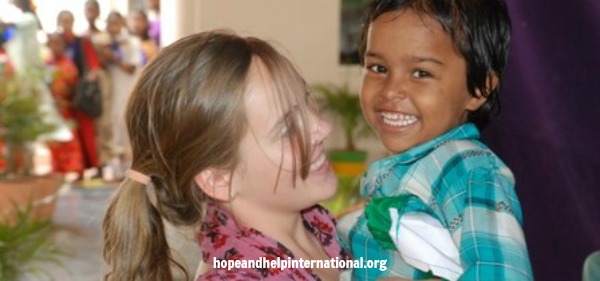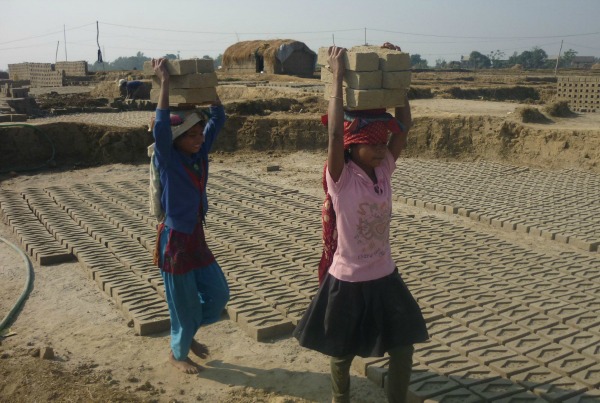
In 2009 Stephanie came with a team to South Asia to do Kids Camp, with children from the Veda School, when she fell deeply in love with a 4 year old named Kavya.
Kavya, is a little girl with a charismatic personality despite having grown up in some very difficult circumstances. Stephanie and Kavya formed an immediate bond and Kavya began to call Stephanie, akka, which means big sister, and Stephanie’s family decided to sponsor her. They not only sponsored her but prayed for her daily as well.
The time came for Stephanie to leave and the tears flowed like a waterfall after a heavy rain. Once home, Stephanie couldn’t wait for the day she would see little Kavya again.
After a while the news came that Kavya’s father owed money to loan sharks and he had come and taken the now 6 year old away and no one knew where she was. Brokenhearted and worried Stephanie prayed for her protection and well being. The concern in the back of her mind was that she would be sold or taken into slavery or that she would be sold into the child sex slave market to pay the father’s debt to the lone shark. This was a very real fear!
She remained missing for the next two years! Akka prayed diligently for her little sister. Read more about Kavya’s story.
The Small Hands of Slavery
About 4.3 million children between the ages of 5 and 14 are believed to be working in India, although it is a huge problem in all of South Asia, according to a 2013 report by the U.S. Department of Labor. A large percentage of those children are working as bonded child labor.
While forced child labor is illegal, India allows children under the age of 14 to work.

Child Labor
photo credit: wikipedia/krish dulal
What is Bonded child labor?
Bonded child labor, is a little known phenomenon in South Asia because most are found in urban areas rather than in cities. These children are working in conditions of servitude in order to pay off a debt to their employer which has been incurred not by the children themselves, but by their relatives or guardians-usually by a parent.
Bonded labor is a form of slavery. Children who are bonded with their family or inherit a debt from their parents are often found in agricultural jobs or “helping” their families in brick kilns, stone quarries. However, it is moving into other areas such as beedi-rolling (a thin India cigarette), carpet weaving, commercial sexual exploitation, construction, fireworks factories and hotels, etc. These debts tend to be relatively modest, ranging on average from 500 rupees to 7,500 rupees ($8-$120) depending on the industry and the age and skill of the child.
Pledging individual children is on the rise and usually leads to trafficking of children to urban areas for employment where they work in small production houses versus factories, which keeps them off the radar.
In South Asia, bonded laborers are mostly migrant workers, which makes them vulnerable to exploitation. Most often they come from low caste groups which also means they don’t draw attention. Unfortunately, most of the time the debt never gets paid off and the workers remain enslaved unless someone pays it in full.
Bonded child slaves are at a high risk of physical and sexual abuse and neglect sometimes leading to death. They are often psychologically and mentally disturbed and haven’t learned many social skills or survival skills.
Hope and Help International is working on in South Asia to help prevent bonded child labor by: building bridging schools, training and equipping pastors to educate those in their villages, child sponsorships, etc.
Stephanie was acutely aware of the possibility of Kavya becoming a bonded slave, so she took action to cut her risk by becoming her sponsor.
By sponsoring Kavya, she received benefits and opportunities that she would most likely never have had without Stephanie’s intervention. She will receive and education and medical care which would have not been possible before. Her health improved and she grew stronger as a result of having nourishing balanced meals each day. Most important of all is the consistent testimony of the Gospel she is exposed to. Her chances of coming to Christ through the ministry of the teachers and school staff is much higher.
Kavya is now in a protected environment with people checking on her whereabouts on a regular basis which drastically reduces her chances of abduction.
If you, or someone you know, would like to invest in the life of a child or learn more about Child Sponsorship visit Hope and Help International.